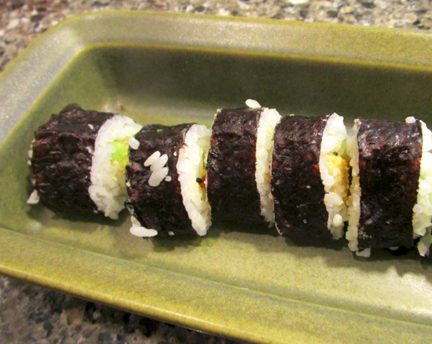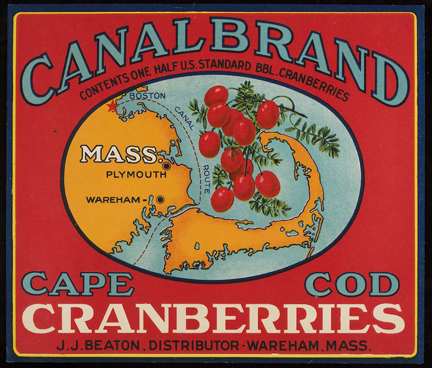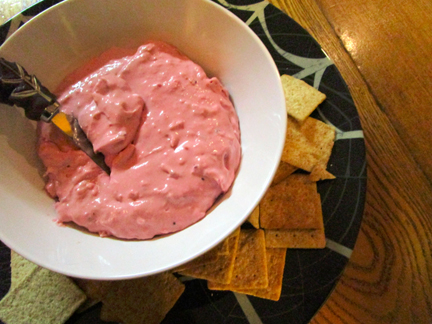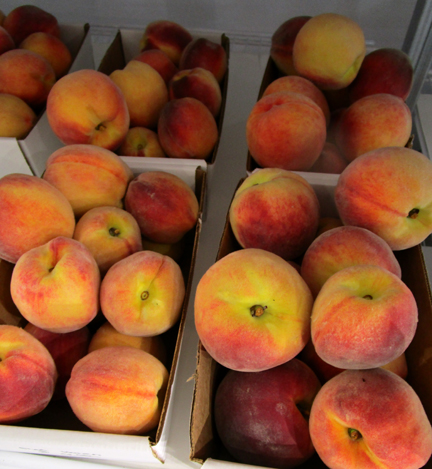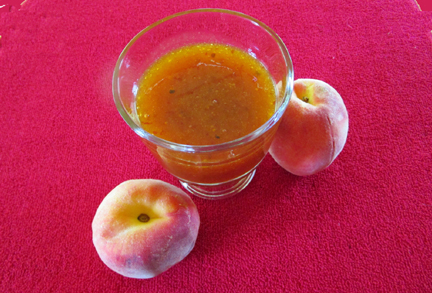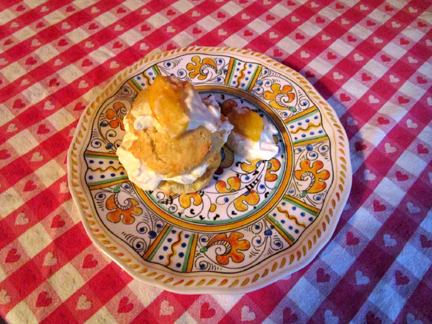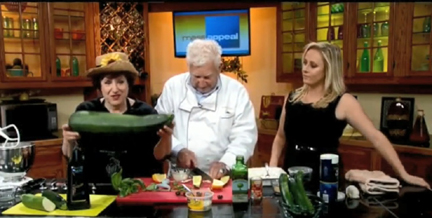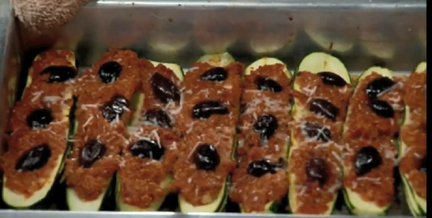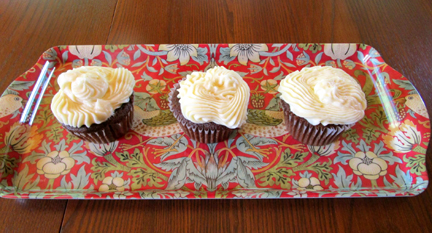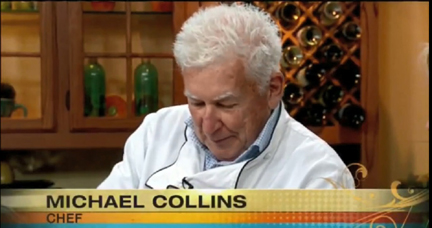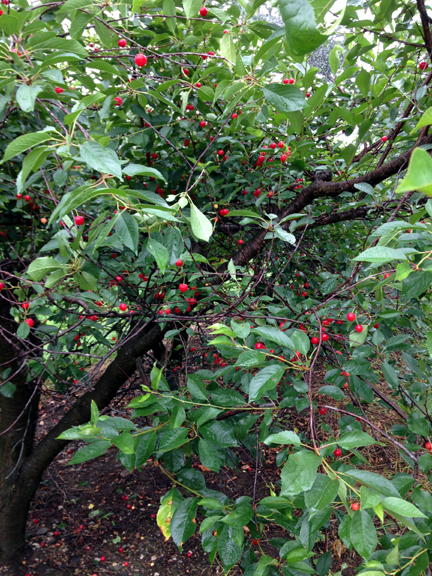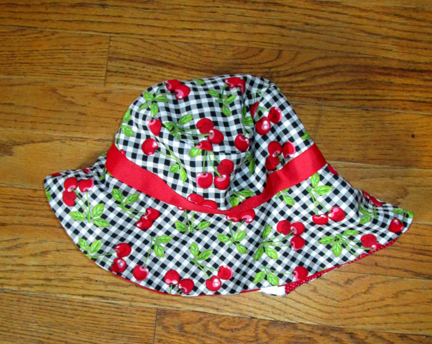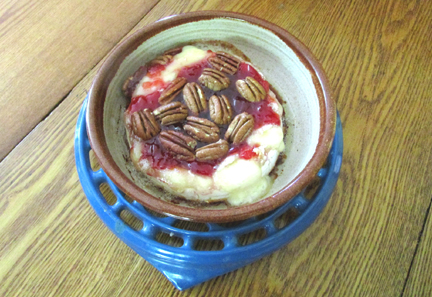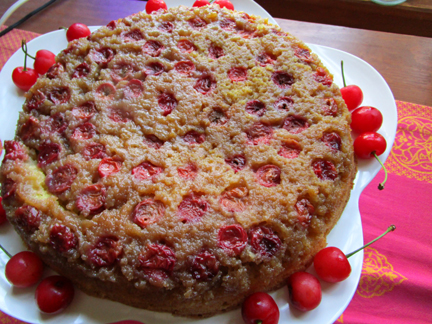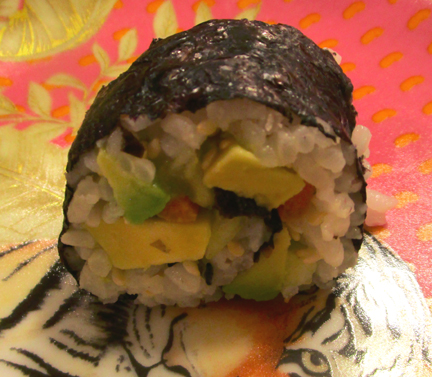
One of my favorite things to do during my holiday shift at Williams-Sonoma (which ends in February) is teaching cooking classes, particularly children’s classes. I love the enthusiasm and appetite young people bring to the experience.
Last month I was asked to teach a class in conjunction with the store’s American Girl Around the World Cookbook. The class covered an odd but intriguing duo of recipes: vegetable sushi and Black Forest cake.
I have worked with the American Girl books before, and in general I’m not crazy about them. The recipes tend to be bland and sometimes don’t quite work.
The Black Forest cake recipe lived up to that experience. I actually baked the basic cake twice. (It had to be made before the class so that it had time to cool before my students decorated it.) In neither case did I care for the consistency. My students didn’t really mind because the whipped cream and cherries they slathered all over the final product literally and figuratively covered up the cake’s defects.
The sushi was a different story. I love seafood but I have had it in a best sushi restaurant nearby. But I never made sushi before, so I enlisted my family’s aid in pre-testing the recipe. We did change it a little bit. The cookbook wanted the sushi rolled by hand into little cornets. I couldn’t for the life of me make that work. Instead, we rolled it by hand into the classic cylinders and rounds. Soon my sister-in-law, who adores sushi, purchased a little sushi mat to simplify the rolling procedure. It definitely helped—but if you want to try the recipe, you don’t have to have the mat.
Here is the cookbook’s recipe, amended by my family. Our sushi is a work in progress, but it will improve over time. Meanwhile, I’m happy to report that my students had a grand time making the sushi. Their rolls weren’t entirely neat (neither are mine!), but they tasted great.
Of course, the fillings for the sushi can be varied. One of these days I plan to try making classic sushi with fish. For the moment, I’m happy.
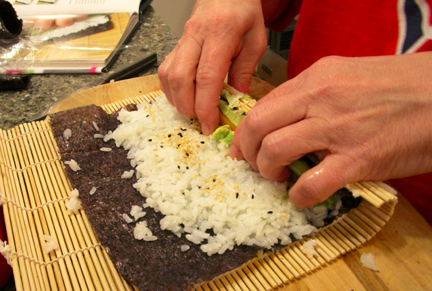
Ingredients:
for the rice:
2 tablespoons rice vinegar
1-1/2 tablespoons sugar
1-1/2 teaspoons salt
2 cups cooked short-grain sushi rice (we have been using Nishiki brand, but others are available), still hot
for assembly:
1 teaspoon rice vinegar
2 tablespoons water
2 to 3 sheets of nori (seaweed), cut in half
2 tablespoons toasted sesame seeds (white or black or some of each)
2 baby cucumbers, peeled (or not!) and cut into thin pieces
several baby carrots, cut into thin pieces
1 ripe avocado, peeled, pitted, and thinly sliced
for serving:
soy sauce or tamari
wasabi (optional: some people, like me, love it, while others find it too spicy)
Instructions:
Begin by making the seasoning for the rice. In a small saucepan combine the vinegar, sugar, and salt over low heat. Stir and heat until the sugar and salt dissolve (a minute or 2). Set aside to cool completely.
Cook the rice according to package directions. (I usually cook it for a little less time than the recipe suggests and then let it sit off the heat for 10 minutes to finish cooking on its own.)
Place the hot rice in a baking dish, using a spatula or paddle to spread it out evenly. Slowly pour in the vinegar mixture while slicing the spatula through the rice to make sure that it goes all the way through. Flip the rice so that all of it gets some of the liquid. Cover the rice with a clean, damp cloth while you get ready to make your sushi. (The seasoned rice is essential to really good sushi so don’t try to skip this step.)
Combine the vinegar and water for assembly in a small bowl. Place 1 piece of nori, shiny side down, on a clean, dry work surface or sushi-rolling mat. The long side should be closest to you. Slice the nori in half so that you have two long sheets.
Scoop a couple of tablespoons of rice onto one of your sheets. Dip your fingers in the vinegar/water mixture to keep the rice from sticking to them; then gently flatten the rice on the sheet, leaving room on all sides but particularly on the long side opposite you.
Lightly sprinkle the rice with some of the sesame seeds; then place a few slices of cucumber, carrot, and avocado on top, keeping them fairly near you on the rice.
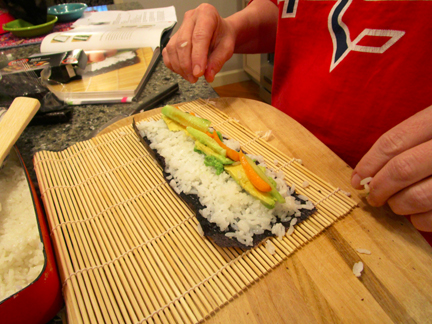
For this roll we forgot the sesame seeds and went too close to the edges of the nori (nobody’s perfect!), but you can see how the vegetables are clumped together.
Lift the side of the nori closest to you, and roll it forward. The process is a little delicate. You want a small amount of pressure to keep the sushi together, but you don’t want to squash it.
When the sushi is rolled, remove the mat (if you are using one) and slice the sushi into little rounds with a serrated knife. Serve with soy sauce and (if you like it) wasabi. Serves 4 to 6 as an appetizer.
